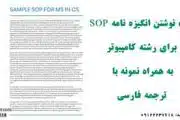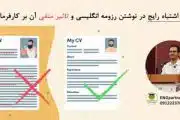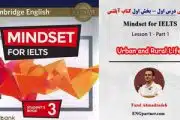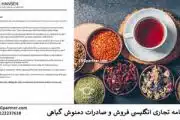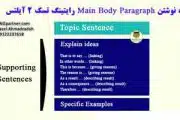روش جواب دادن به سوالات Match Paragraph Headings در ریدینگ آیلتس
هدف از این درس: یادگیری تکنیک و روش جواب دادن به سوالات تطابق عنوان یا تیتر پاراگراف با متن (Match paragraph headings)
یکی از سوالات پرتکرار و رایج ریدینگ آیلتس این است که از شما می خواهند تا عنوان مناسب برای پاراگراف انتخاب کنید.
در این پست چند سوال از این نوع را تمرین می کنیم و سپس نمونه واقعی سوالات ریدینگ آیلتس به همراه متن اصلی را جواب میدهیم.
و در پایان در مورد نحوه انتخاب جواب صحیح از میان دیگر جواب ها بحث خواهیم کرد. برای ثبت نام در کلاس آیلتس به این صفحه مراجعه کنید.
استراتژی های پاسخ دادن به این سوال های ریدینگ آیلتس
- ابتدا تمام عنوان پاراگراف های موجود در سوال را بخوانید تا بدانید که چه می گویند.
- سپس به اولین پاراگراف متن نگاه کنید
- در برخی از پاراگراف ها کافی است که جمله تاپیک با دقت خوانده شود چرا که ایده اصلی و جواب در آن نهفته است. پس از آن می توانید بقیه پاراگراف را Skim کنید.
- برخی مواقع جواب در جمله تاپیک نیست و تمام پاراگراف باید با دقت خوانده شود
- اگر عنوان اول با پاراگراف مطابقت نکرد، سریع به سراغ عنوان بعدی بروید.
- اگر در ابتدا بین دو جواب مانده اید، هر دو را انتخاب کنید. شاید در انتهای آزمون آیلتس به نتیجه برسید که کدام صحیح تر است و مطابق پاراگراف است.
اگر باز هم در انتها شک داشتید، چاره ای ندارید به غیر از اینکه یکی را انتخاب کنید.
نکات قبل از شروع تست زنی ریدینگ
- دقت داشته باشید که همیشه تعداد عناوین پاراگراف Paragraph headings موجود در سوال ، از تعداد پاراگرافهای متن بیشتر است. بنابراین باید دقت مضاعف داشته باشید.
- بعضی مواقع لغات کلیدی موجود در عنوان و متن پاراگراف دقیقا یکسان نیستند و مترادف یکدیگر هستند. بنابراین به مترادف ها نیز دقت داشته باشید.
اگر عین یک لغت در عنوان ، در متن نیز بود، دلیل نمی شود که این عنوان برای پاراگراف مربوطه است.
تمرین اول پاراگراف هدینگ یا Paragraph heading
تمرین اول مربوط به یک سوال و یک پاراگراف است تا دقیقا متوجه سوال و روند پاسخ دادن به آن شویم.
پاراگراف زیر ، یکی از پاراگراف های متنی اصلی است که در ادامه تمرین خواهیم کرد.
همانطور که مشاهده می کنید در سوال ، پنج عنوان پاراگراف داده شده و شما فقط باید یکی را انتخاب کنید.
در متن اصلی این سوال ریدینگ آیلتس تعداد پاراگراف ها 7 عدد هستند از A تا G.
پاراگراف A قبلا جواب داده شد.
پاسخ پاراگراف B:
B: In the 19th century most towns were heavily fortified and the foundations of these walls are sometimes visible. Collecting tolls to enter and exit through the walls was a major source of revenue for the old town rulers, as were market fees. The markets were generally located centrally and in small towns, while in large towns there were permanent stands made of corrugated iron or concrete. The market was usually next to the local ruler’s palace.
در اولین سوال ، لغت foundation در جمله تاپیک پاراگراف قرار دارد. اما این به تنهایی vi را نمی تواند جواب نهایی اعلام کند. اما دلیل خوبی است که vi یکی از کاندید های جواب باشد. جمله تاپیک همچنین به history اشاره می کند که می تواند به “19th century” مربوط باشد و به ما بگوید که پاراگراف در مورد تاریخ است.
با یک skim می توانیم مطمئن شویم که جواب نهایی Historical foundation است.
پاسخ پاراگراف C:
C: The palaces were often very large. In the 1930’s, the area of Oyo’s palace covered 17 acres, and consisted of a series of courtyards surrounded by private and public rooms. After colonization, many of the palaces were completely or partially demolished. Often the rulers built two storey houses for themselves using some of the palace grounds for government buildings.
جمله تاپیک لغت Palaces را در خود دارد. جایی که حاکمان یاروبا Yaruba rulers در آنها زندگی می کنند. در لیست عناوین سوال کلمه residences of the rulers به معنی محل سکونت حاکمان را داریم. بنابراین به ix نزدیک شدیم.
اگر ادامه پاراگراف را سریع بخوانیم متوجه می شویم که کل متن در مورد کاخ های یاروبا است.
مراقب باشید که در دام کلمه colonization به معنی “مستعمره سازی” در لیست هدینگ ها نیوفتید. این کلمه فقط به یک جمله از پاراگراف اشاره دارد، نه به کل پاراگراف.
جواب نهایی residences of the rulers است.
پاسخ پاراگراف D:
D: The town is divided into different sections. In some towns these are regular, extending out from the center of the town like spokes on a wheel, while in others, where space is limited, they are more random. The different areas are further divided into compounds called “ile”. These vary in size considerably from single dwellings to up to thirty houses. They tend to be larger in the North. Large areas are devoted to government administrative buildings. Newer developments such as industrial or commercial areas or apartment housing for civil servants tends to be built on the edge of the town.
جواب این پاراگراف در جمله تاپیک نهفته است. ترجمه جمله اول “شهر به بخش های مختلفی تقسیم شده”
همچنین به مترادف کلمه town که urban است دقت کنید. استفاده از مترادف ها در آیلتس بسیار رایج است.
جواب نهایی Urban divisions است.
پاسخ پاراگراف E:
E: Houses are rectangular and either have a courtyard in the center or the rooms come off a central corridor. Most social life occurs in the courtyard. They are usually built of hardened mud and have roofs of corrugated iron or, in the countryside, thatch. Buildings of this material are easy to alter, either by knocking down rooms or adding new ones. And can be improved by coating the walls with cement. Richer people often build their houses of concrete blocks and, if they can afford to, build two storey houses. Within compounds there can be quite a mixture of building types. Younger well-educated people may have well-furnished houses while their older relatives live in mud walled buildings and sleep on mats on the floor.
جمله تاپیک به ما سرنخی میدهد که شاید iv درست باشد چرا که در مورد houses و استایل های آن صحبت میکند. در جملات بعدی پاراگراف نیز این مسئله تایید شده است.
جواب نهایی Architectural home styles است.
پاسخ پاراگراف F:
F: The builder or the most senior man gets a room either near the entrance or, in a two storied house, next to the balcony. He usually has more than one room. Junior men get a room each and there are separate rooms for teenage boys and girls to sleep in. Younger children sleep with their mothers. Any empty room are used as storage, let out or, if they face the street, used as shops.
در لیست هدینگ ها ، لغت domestic مربوط به خانه است و به معنی داخلی می باشد. کلمه بعدی arrangements است که مربوط به ترتیب بندی فضای داخلی خانه است.
اگر دوباره جمله تاپیک پاراگراف را بخوانید، متوجه می شوید که این پاراگراف از نوع چینش فضای داخلی خانه صحبت می کند. با خواندن و skim ادامه پاراگراف، حدس ما به یقین تبدیل خواهد شد.
جواب نهایی Domestic arrangements است.
پاسخ پاراگراف G:
G: Amenities vary. In some towns most of the population uses communal water taps and only the rich have piped water, in others piped water is more normal. Some areas have toilets, but bucket toilets are common with waste being collected by a “night soil man”. Access to water and electricity are key political issues.
در جمله تاپیک لغت Amenities را داریم که مترادف Facilities است. بنابراین اولین سرنخ بدست آمد. اما باید پاراگراف را تا انتها بخوانید و متوجه شوید که متن ریدینگ در مورد امکانات شهر یا facilities of the town صحبت می کند.
جواب نهایی Town facilities است.
بازگشت به صفحه تقویت مهارت ریدینگ آیلتس





